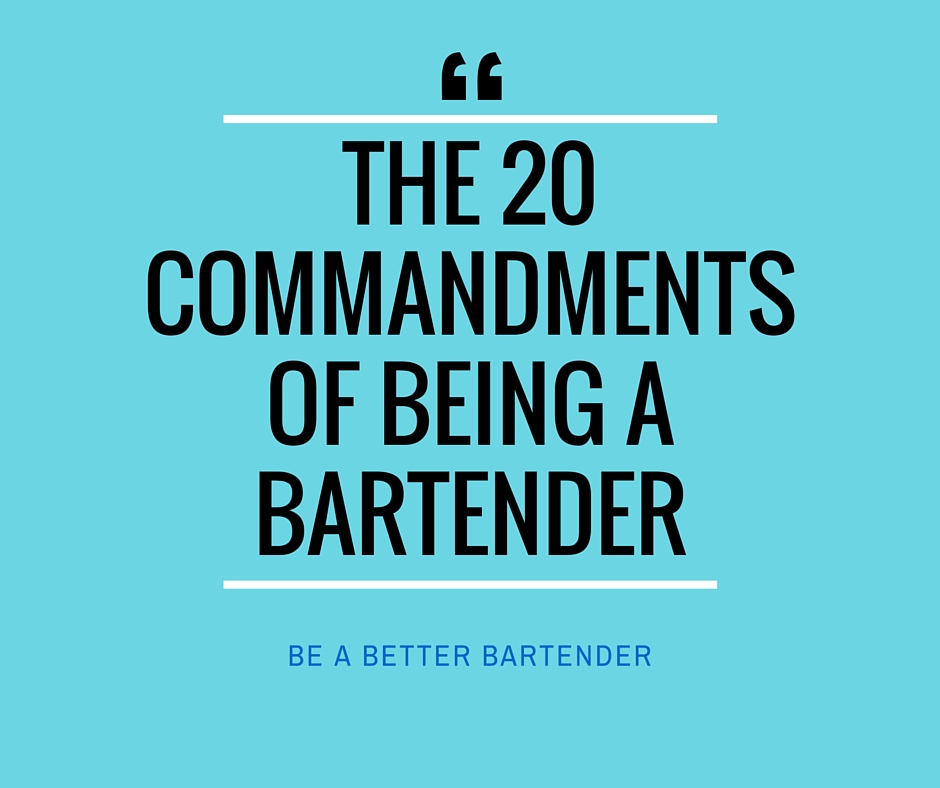Dealing With The Drunks
July 1, 2014Bartender Trainingalcohol,bar,bar manager,be a better bartender,customer service,drinking,how to be a better bartender,professional bartending,tips,tricks,what's expected of a bartender
Part of being a bartender is your ability for dealing with drunks and unruly customers.
It is essential you deal with customers who have had a little bit too much to drink in the correct manner to get the best outcome.
Remember – it is illegal to serve customers who are too drunk as you may be putting their lives at risk. Bottom line, don't serve the intoxicated.
Drinking alters people’s perception and ability to control their actions.
How would you feel if you served someone who was already far too intoxicated and they walked out of the bar and got run over because they didn’t see the car coming... not very good I’m guessing!!!

Offer Water
If you feel a customer is well on their way, instead of serving them alcohol suggest they have a water to sober up a little bit or suggest they get some food to soak up some of the alcohol.
Remember to always use a friendly tone of voice and not speak to the customer in a patronising manner, as this will cause them to become defensive and demanding.
Ignore
The second method of dealing with a drunk customer is the ‘ignore the drunk or drunks’ method.
If the customer has already been cut off or you think they are too drunk to be served let them know you’ll be with them in a minute.
Try to serve the other people at the bar, avoiding them but telling them you’ll be with them in a minute.
Remember – this method only works if the bar is busy enough for you to appear too busy.
Hopefully, the customer will get bored of waiting and move on.
Get Their Friends On Your Side
The third method is to employ a more sober friend to help with the situation.
Just have a quiet word with their friend and let them know you think they have had a little bit too much to drink.
Advise them that their friend needs to cool off for a while, otherwise, they may be asked to leave.
The friend will then be on your side and encourage the drunk to calm it down so he or she won’t ruin the rest of the groups’ night.
If you ever feel uncomfortable dealing with a drunk customer ask a manager to deal with the situation.
As managers, we should have all been trained in coping with unruly customers. Managers would rather you come to them for help rather than putting yourself in an uncomfortable position.
Communication is key when dealing with drunks.
If you have cut off a customer it is essential that you let all other bartenders, managers, bar backs and floor tenders know that they have been cut off.
The customer will no doubt try and get a drink from another member of staff.
If we as a team present a united front that the customer will not be getting served again in your establishment, he or she will most likely give up and move on.
Best ways to deal with the drunk customers #BABBT Click To TweetThe Brief History Of Vodka That You Probably Didn't Know
June 25, 2014Drinkable Histories,Bartender Training,Specific Spirits,alcoholbar,bar manager,be a better,be a better bartender,cocktail,customer service,distillation,drinking,history of vodka,how to be a better bartender,peter the great,poland,polish vodka,professional bartending,Pyotr Smirnov,russia,russian vodka,smirnoff,tips,top tips,tricks,vodka,vodkahistory,what's expected of a bartender,Vodka
You may have heard about the fights between Poland and Russian on the subject of the history of vodka.
Since vodka’s introduction into the West, it’s boasted of being tasteless & odourless.
Indeed the US government initially defined vodka as a clear, neutral spirit so distilled, or so treated after distillation with charcoal or other materials, as to be without discernible flavour or aroma.
Vodka’s earliest campaign in the West even claimed to “leave you breathless”. So, denied its heritage and introduced as the white whisky, vodka was a successful iconoclast and a certain hit with the young but denied any recognition of its own product realities.
Now, the EU defines vodka as a spirit in which the characteristics of their raw materials are selectively reduced and this defines, more accurately, many of the vodkas that emanate from the East and some of the more recent vodkas created in the West. These remain the purest of spirits while retaining some character from their raw materials.
Vodka, the world’s most popular spirit, remains pretty functional in the East where, historically, it’s usually been drunk neat, a refuge from life’s horrors and an aid to the digestion of fatty foods.
In the West, vodka’s been drunk more as a lifestyle statement than because of what’s in the bottle. So long as it was clean and neutral, few had reason to know about vodka’s product realities except perhaps its alcoholic strength.
The future looks very different as Westerners now call for so-called vodkas with character, whether they be traditional vodkas from the East or vodkas with taste, texture and aromatics, now distilled in the West.
History
Vodka is probably the world’s oldest spirit but Russians and Poles disagree about the origins and neither has the definitive evidence to support their claims.
Russia gave us the word ‘voda’, meaning water and ‘vodka’ meaning ‘little water ’ though Poland has similar words ‘woda’ and ‘wodka’.
The diminutive ‘ka’, when used in the middle ages, meant better, a description most likely true of vodka because water, at that time, not only tasted bad but could be very unhealthy too.
What is true is that Poland was distilling vodka for medical use by the 11th century and, by the 17th century, vodka was Poland’s national drink.
In Poland
3 copies of a lifestyle book, dated 1405, contain mention of how to infuse your “vodka” and in 1534 a Polish encyclopaedia of medicine & science explained how to distil herb vodkas and suggested using vodka to cleanse the skin after shaving or to rub on after a bath to remove unpleasant odours!
Making vodka was less restricted than in Russia and in 1546, King Jan Olbrecht issued a decree allowing every citizen the right to make vodka. As a result, distillation was very much a family affair, and by the sixteenth century there were 49 commercial distilleries in the town of Poznan alone. In the centuries that followed vodka distillation and consumption became established at all levels of Polish society and today Poznan remains a major centre for the production of vodka.
In Russia
Alcohol production was first documented in the 9th century, but spirits were thought to have arrived in Russia through Italian traders in the 14th century. Early distillations were likely for medicine or even gunpowder rather than for drinking but only a century later, a monopoly on distillation and sale of spirits was imposed in Moscow, suggesting that, by then, levels of consumption were already considerable. In the 1540s the Russian Tsar Ivan 'the Terrible' established his own network of distilling taverns, making sure that profits went straight into the Imperial treasury. He outlawed taverns that were outside his control and banned distilling by potential rivals. Always needing support from the nobility, however, he did allow them to continue distilling vodka.
High alcohol vodkas developed in cold Northern countries because in cold temperatures only high levels of alcohol ensured that the drinks remained liquid. Better still and much, to everyone’s surprise, the higher the level of alcohol, the more palatable the spirit. Distillation, however, was an imperfect science and so, in these early years, impurities remained in the finished spirit.
Successive rulers maintained their monopoly on vodka distillation but continued to grant distilling rights to the nobility and government officials. As their knowledge grew, the nobility tended towards the production of quality vodka while the peasantry made vodka of sorts for themselves, usually adding flavours to mask the raw spirit.
From the beginning of the 17th century, it had become customary for vodka to be served at Russian Imperial banquets and all formal meals began with bread and vodka. Vodka was also drunk at religious festivals. Peter the Great was renowned for his hospitality and love of drinking and, in his time, the Governor of Moscow was known to have trained a large bear to serve pepper Vodka to his guests or to remove the guests’ clothes, if they refused their drink.
In 1863 the government monopoly on production was repealed and Pyotr Smirnov, among others founded his distillery in Moscow. Until then vodkas had remained far from pure and the product of single distillation in pot stills but the Smirnov family pioneered charcoal filtration and, in the 1870s, were the first to use the continuous distillation process.
Success followed quickly with Smirnov, now the vodka of the Czars, reputably soon selling more than 4 million cases p.a. in Russia, thanks, in part, to the authoritarian Russian governments being more afraid of people thinking than drinking and so turning a blind eye to the widespread drunkenness. To assist the war effort, vodka distillation was banned in Russia in 1914. 3 years later the masses, no longer so drunk, rebelled and overthrew their government, no doubt encouraging Stalin to rediscover the ‘benefits’ the Czars had seen in cheap vodka during his reign of terror.
In Sweden
A distilling prodigy, Lars Olson Smith introduced continuous distillation and began to produce spirits with exceptionally low levels of impurities, particularly his Absolut Rent Brannvin, launched in 1879. Success earned him the title ‘King of Spirits’ but, still, vodka was not to gain broad success across Western Europe until the second half of the 20th century.
First, the Smirnov family fled the Russian Revolution and set up in Europe, changing their name to Smirnoff. They were not successful and sold their recipe to a family friend who had escaped to America. The recipe for Smirnoff arrived in America in 1934 and, though again, not initially successful, the ‘vodka’ experience of troops meeting Russian soldiers during World War 2 and clever marketing in the West, transformed vodka from a curious speciality from the East, into a fashion icon. From the 1950s onwards, Smirnoff drove the ‘breathless’ revolution and vodka became a global and stateless, truly international spirit, to be enjoyed more for the alcoholic kick it added to a mixer than for its own character.
clever marketing in the West, transformed vodka from a curious speciality from the East, into a fashion icon Click To TweetIt wasn’t until the approach of the 21st century that Westerners began to show interest in what was in the bottles but today, alongside neutral western vodkas, numerous traditional vodkas from the East are to be found as well as vodkas, distilled in the West, proud of their character, whether sourced from spring waters, local raw materials or process.
A choice can now be made between vodkas that represent a lifestyle choice and those, from the East & the West, that offer distinct product realities, whether in the vodka itself and/or in the vodka’s heritage and provenance.
The 20 Commandments of Being a Bartender
June 25, 2014Bartender Trainingalcohol,bar,bar manager,cocktail,commandments,customer service,drinking,how to be a better bartender,keep on smiling,making eye contact,managing a bar,tips,top tips,tricks
So were chatting the other day over here at Be A Better Bartender about what it takes to be a bartender. We decided that we had to make a list. For four hours we argued. We argued hard. As lists go. We are pretty happy with what we have come up with. Tell us what you think below. Do you agree? Would you change any of them?
#bartending really is about working smart rather than hard Click To TweetThis is unbiased from the views of both what a manager wants to see and what the customer wants to see from the bartender. We decided to flesh this out after our last post's success.
Make Eye Contact
Be a roving Bartender and keep a wary eye. Greet all guests with a smile and eye contact as they arrive at the bar. On a quiet night there is no excuse for not providing a speedy service, but on a busy night if you can’t take care of a guest immediately, acknowledge them and indicate you will take care of them shortly. Even if you’re very busy, SMILE, make eye contact, nod your head. Human beings are insecure creatures. We all like to be smiled at.
Offer a Cocktail Menu
Greet all guests and offer them a cocktail menu as soon as they arrive.
3 Put Down Beverage Napkins (Beer Mats)
Put a bevnap in front of the customer you are serving, and those you know you will serve immediately afterwards. The bevnap in front of the customer tells other Bartenders that that particular guest is being looked after. It also makes customers feel acknowledged. It saves a Bartender asking ten people in a row, “have you been served?” because a bevnap was not placed in the first instant. If the bevnap’s gone when you come to put down drinks, replace it with another one.
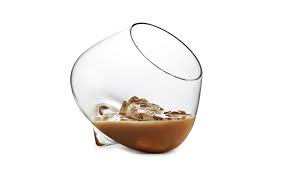
Offer a Sincere Greeting
As a Bartender dealing with a guest you have never met before, you must never appear surly or agitated, no matter what has happened in your personal life. A sincere hello must always be offered, remember: the money the customer spends pays your wage.
Make Sure You Know Everything
You are only as good as what you know. Every bar offers products and talents which are unavailable in most other places. Know all the products that you stock. Understand what the differences between products and techniques are. Learn all new products as they arrive. Be complete on your cocktail knowledge. Train yourself continually. Be motivated.
Up sell Knowledgeably
Offer customers alternatives. If you’re knowledgeable, it won’t sound like you’re up-selling. (‘Have you tried Blanton’s, it’s a rich single barrel bourbon’, etc). Knowledge when up-selling makes the customer trust your judgement, and more willing to be up-sold to.
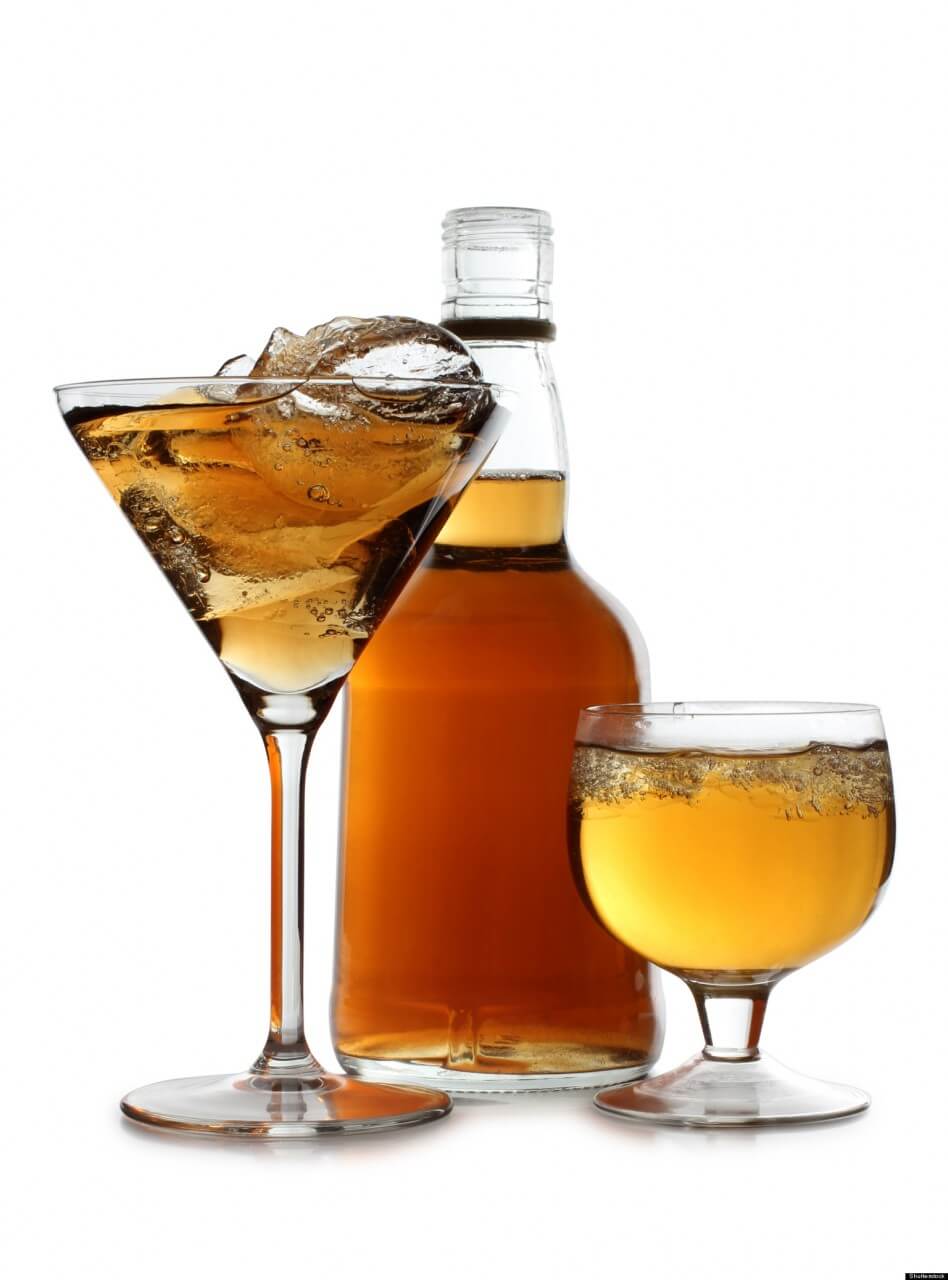
Be Efficient
Whether it be for drinks, service or acknowledgement, efficiency is key. Never slow down a drinks preparation by carrying on a conversation with a colleague. Get your priorities straight: take the order, make the drinks then sell the drinks. Remember you have two hands (and forearms). Make drinks in front of the guest whenever possible.
Be Organised
Continuously going back to a guest to re-check an order is highly inefficient. No-one expects you to remember dozens of orders. But you should be able to handle two different orders for mixed drinks. As you are waiting for a customer to hand over their card or pay, look up and ask the next guest what their order is. Organisation is the keyword.
Be Technically Proficient
Be professional and technically perfect. Work on your methods. Get your pouring exactly right. Understand how to shake drinks, how to stir, how to serve. You are a professional firstly and a showman secondly.
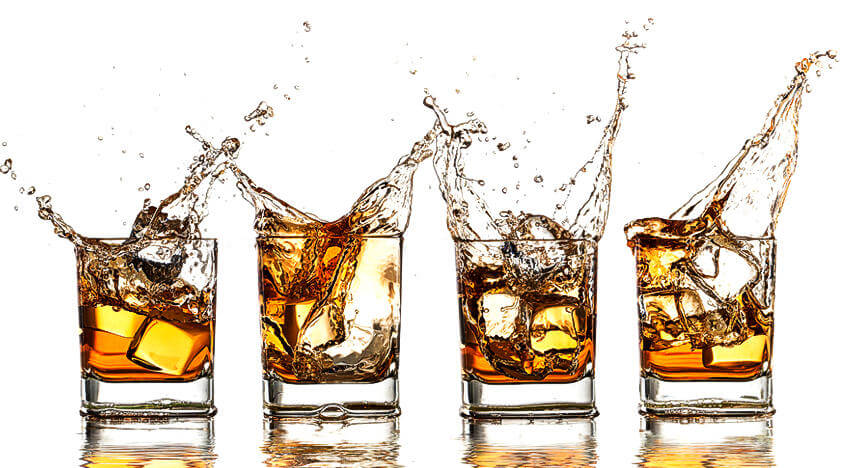
Prioritise
Certain drinks deteriorate the longer you leave them standing, it is therefore imperative that you organise multiple orders in a systematic way. The long ice filled drinks first, the shorter drinks next, and the martinis last. A long drink can sit at the bar for longer before it is unservable than a martini, which begins to warm immediately.
Secure Payment Immediately
Secure the payment as soon as possible. It is perfectly polite to ask, ‘Will you be running a tab?’, and if the answer is no, hand over the bill.
Check back on the guest and talk
Are their glasses getting empty? Do they want another drink? How did they like your recommendation? They will be pleasantly surprised. Create a friendly atmosphere, talk to the guests. Talk to them about drinks. Keep an eye on their drinks. Friendliness and conversation are welcome from a Bartender, but avoid long, involved conversations with guests that may interfere with service to other guests.
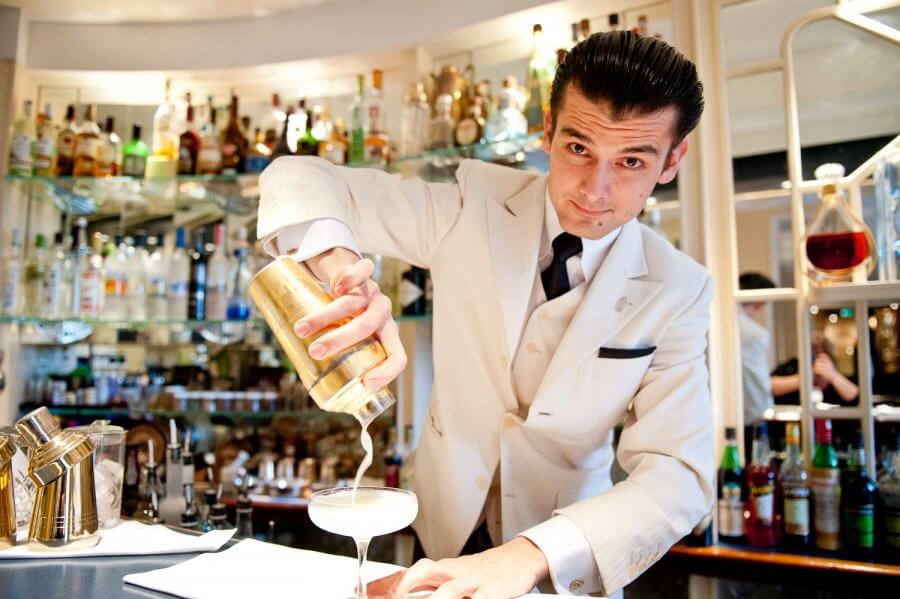
Be thoughtful and proactive
Look after customers who have little spillages. If someone is looking around obviously, find out if they are looking for the loos and point them out. Pour wine or Champagne ordered by the bottle; don’t let customers pull wet bottles out of their ice bucket, covering the bar and themselves with water.
Offer food
Know what’s on the food menu. Up-sell food, that’s what the food menu is there for. Use it. A bar is most often than not just a place to drink in. People will be able to drink more once they have eaten something.
Be Clean
Constantly check up on the state of the bar area. Check for spillages, dirty ashtrays outside, coasters, straws, napkins, empty beer bottles etc. No customer wants to put their elbows into a patch of spilt beer. Take away empty bottles and wipe at the same time. No more than one cigarette butt in an ashtray. Build it into your bartending behaviour; clean the bar top at every available opportunity.
Work as a team
Your bar team is more than just a collection of individuals. It is essential all bartenders, bar backs and floor tenders work as a team to provide an all-round service to the customer. It is pointless a bartender creating the most amazing looking and tasting cocktails if the customer then has to go and sit at a wet table with empty glasses on it.
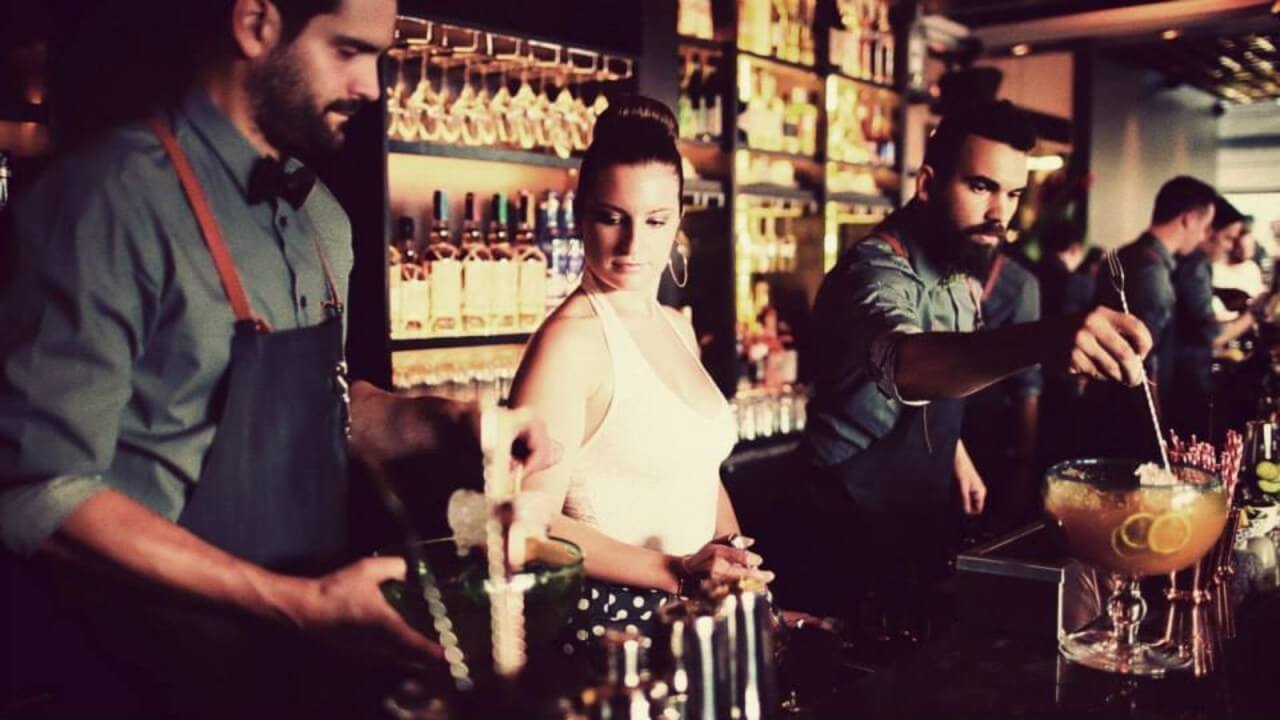
Offer a sincere farewell
“Cheers, thanks!” Even if you’ve been busy and they don’t hear, someone else will. It’s the last thing they should remember about the bar they were in, and they will remember it was a friendly place.
Be as well presented as your drinks
Be clean. Look clean. Clean your fingernails. Guests don’t want orange peel flamed by someone with gunge under their nails. Pay attention to yourself.
Don’t serve the drunk, unruly or underage
If a guest is unruly or highly intoxicated, either upon entering the room or during the course of the evening, indicate this to your manager before offering an additional beverage service. Do not serve alcohol to persons under the legal age. If you believe that a guest may not be old enough to drink, ask for identification.
Be helpful, be cool, take pride in who you are
You are here to turn difficult guests into friends, to make great drinks, to help people have a good time and even on occasion to teach people how to have a good time. Take pride in who you are and what you know.
All #bartenders need to read this! Click To Tweet
So what do you guys think? let us know below
What's Expected of a Bartender?
June 21, 2014Bartender Trainingbe a better,be a better bartender,professional bartending,what's expected of a bartender
So What Exactly Is Expected of a Bartender?
The real title of this post would be more accurately named "According to the customers, what exactly is expected of you as a bartender. But you need to be so good at it that even the customer doesn't realise you are doing it..." Yeah that's what we thought, too much of a mouth full. It's easier to explain we promise. 😀 So...
Imagine yourself in your favourite bar. What is it that makes it so good? The decor? the drinks? the music?
Well it is probably a combination of a lot of little things that come together. When they do though, they create your perfect place to have a drink and socialise with people.
You never can quite put your finger on why. You just feel more at home at that particular bar. Even over other similar places that your friends may say they enjoy more.
The truth is that without the right type of bartender, who it is that that tends to the decor. Makes the drinks, and has power over the music. You would most likely hate that bar. What would happen if you went in one day and the bar staff had all been turned into vending machines?
It just wouldn't feel right to not have that human interaction. Don't you agree?
Without the bartenders my favourite bar would be so bad! #bartender Click To Tweet

Believe it or not, most complaints aren't about the products or the state of the toilets. They are about the human input, or most importantly the lack of it. Simply, if there is a bad bartender then the chances are it is perceived as a bad bar. We have all had an experience like this before surely?
Just take a look at this "Gripe-O-Meter" which outlines exactly what complaints customers make when visiting a restaurant.

Lets take a look at life working within a restaurant and then compare.
In a restaurant the customer effectively rents the table from the proprietor.
It is the waiter or waitresses role to simply provide a service to their guests whilst they are in the dining room. A key part is to be careful not to intrude into the guests’ space, whilst still providing a high level of service.
If a waitress or waiter sits down at your table and starts telling you about your day, you are going to think that it's odd right?
But if the waiter or waitress doesn't sit at your table you would never say that was odd, so that would go completely unnoticed by you in a restaurant.
In bars however it is a different story, so here's what we think makes a great bartender. (So good the customer doesn't even notice...)
The guest and the bartender share the bar. So it is really down to the bartender to welcome customers into the bar. They need to work with the customer to not only provide great quality drinks. But also conversation, laughter, education on drinks, and sometimes even counselling. It does happen...
To ensure every customer has a fantastic experience. The bartender must ensure they provide everything that we just set out above for each and every customer.
The environment set by the bartender must feel completely comfortable to the customer. Now that may mean having to clean up any unpleasant messes, ensuring toilets are kept to the highest standards (even on the busiest of holidays) and management having to deal with any unruly customers who may be impeding on the other guests’ experience.
It is left to the bartender to not only dispense great drinks. Educate customers in the wonderful world of alcohol. Turn difficult customers into long time regulars and also entertain and wow each and every guest who comes through the doors.
What is expected of a truly great bartender though is to not only make great drinks, but be able to do so with a smile whilst reading each guest they serve...
Do they just want a quick beer undisturbed? Are they unsure as to what to drink? Is this the first time they've tried a cocktail? What cocktail would they therefore enjoy?
Are they seasoned drinkers who are looking for a different cocktail to experience their spirit of choice in? Or do they just want to sit at the bar and enjoy some light conversation with another human being?
Remember that the bar is a stage. The bartender should love it.
Remember that the bar is a stage. The #bartender should love it!! Click To Tweet
Bartending is not just a part time job – it is a profession. They need to represent themselves and the bar to the standards that they have been trusted with. Knowledge can be taught but passion for service cannot.
So let's have a quick recap about what we believe should be expected of a bartender;
Let us know if you agree with us in the comments? Is there anything else you would add?
PS: Don't forget to download this infographic below in a handy PDF format



